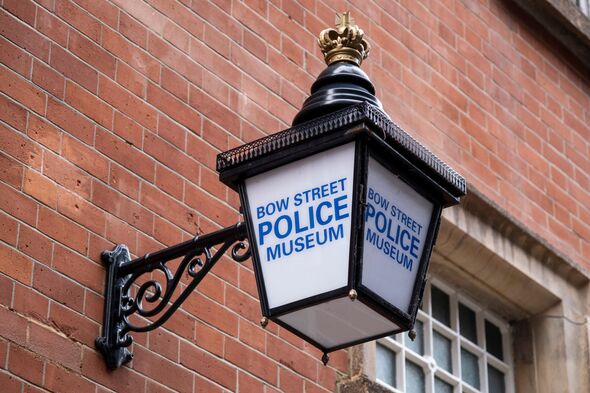London’s crime rates have long been a topic of concern, but the dangers of the Georgian era make today’s issues seem mild by comparison. In the 18th century, the capital was a perilous place, rife with crime and lawlessness, as author Laura Shepherd-Robinson vividly illustrates in her new novel, The Art of a Lie.
Henry Fielding, a celebrated novelist of the time, played a pivotal role in shaping the early British police force. Known for works like Tom Jones, Fielding later became the chief magistrate of Westminster, where he founded the Bow Street Runners, Britain’s first mobile constables. His efforts to combat crime in a city plagued by darkness and danger were groundbreaking.
The Dark Alleys of Georgian London
The London of Fielding’s time was a city shrouded in darkness, with unlit streets and shadowy alleys providing cover for thieves. Known as the “footpad hour,” dusk was a time when robbers would brazenly attack, sometimes blocking streets to trap and rob passersby. The lack of effective policing made London a haven for criminals, with pickpocketing, highway robberies, and home invasions all too common.
The criminal justice system was ill-equipped to handle the rampant crime. Magistrates, tasked with arresting and prosecuting criminals, often selected constables from local citizens who were neither paid nor willing. Corruption was rampant, with many officials accepting bribes. In this chaotic environment, Fielding’s efforts to establish a more structured police force were revolutionary.
Fielding’s Legacy and the Bow Street Runners
Fielding’s life was a tapestry of duty and desire. Born into a prominent family in 1707, his aspirations to become a judge were thwarted by personal scandals. Instead, he became a magistrate, living above his courtroom on Bow Street, amidst the slums and brothels of Covent Garden. Despite the challenges, Fielding refused to take bribes and continued writing, publishing Tom Jones in 1749.
His vision for a reformed police force led to the creation of the Bow Street Runners, a squad of honest constables led by Saunders Welch. This mobile unit was the first of its kind, actively opposing London’s criminals and earning a formidable reputation. Fielding’s 1751 publication, Inquiry into the Causes of the Late Increase of Robbers, proposed significant changes to the justice system, though many were initially met with resistance.
Enduring Influence and Modern Parallels
Fielding’s concerns extended to con men and fraudsters, the “sharpers” of his day, who engaged in scams that echo modern-day frauds. The infamous “Spanish Prisoner” con, for example, has evolved into today’s email scams involving fictitious imprisoned royalty.
After Fielding’s death in 1754, his half-brother John, known as the “Blind Beak of Bow Street,” continued his legacy. John Fielding expanded the Bow Street Runners, introduced a criminal database, and laid the groundwork for modern policing. The Runners operated until 1839, when they were absorbed into the Metropolitan Police Force. Many of Fielding’s proposed reforms, such as the Crown prosecuting criminal cases, were eventually implemented.
For those interested in delving deeper into this fascinating period, Anthony Babington’s A House in Bow Street provides additional insights. Meanwhile, Shepherd-Robinson’s novel offers a fictionalized glimpse into Fielding’s world, as he navigates the dangerous streets of Georgian London.
The Art of a Lie by Laura Shepherd-Robinson is set to release on July 10, offering readers a thrilling journey through history. Shepherd-Robinson will also be teaching a historical fiction writing class at the Theakston Old Peculier Crime Writing Festival this month, providing a unique opportunity to learn from an expert in the genre.
 Rising Tuition Fees in the UK: Is a University Degree Still Worth the Investment?
Rising Tuition Fees in the UK: Is a University Degree Still Worth the Investment? Must-Read Books of July 2025: From Romantasy to Thrillers
Must-Read Books of July 2025: From Romantasy to Thrillers Dick Van Dyke’s Health Scare: Wife Reassures Fans Amid Concerns
Dick Van Dyke’s Health Scare: Wife Reassures Fans Amid Concerns Katy Perry’s Adelaide Concert Halted by Stage Malfunction
Katy Perry’s Adelaide Concert Halted by Stage Malfunction Squid Game’s VIP Scenes: Analyzing the Awkwardness and Backlash
Squid Game’s VIP Scenes: Analyzing the Awkwardness and Backlash